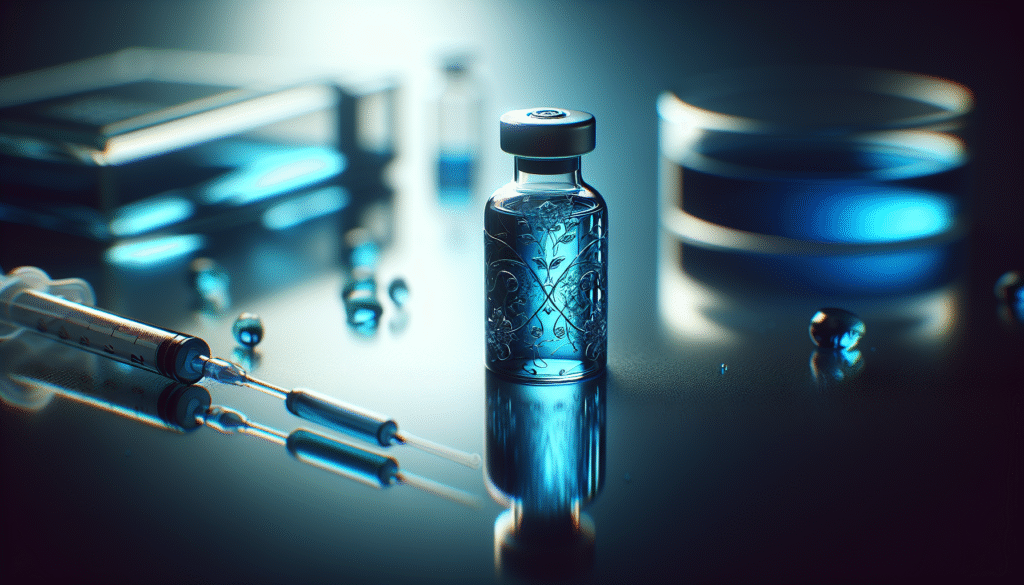
Have you ever wondered how a simple dye can play a significant role in treating various health conditions? Methylene Blue, a compound traditionally used for dyeing, has evolved into a pivotal agent in the field of photodynamic therapy (PDT). In this guide, you will gain a thorough understanding of Methylene Blue and its application as a photodynamic therapy agent.
Understanding Methylene Blue
Methylene Blue is a synthetic dye that has been utilized for over a century in various medical and scientific domains. Originally developed in 1876, it has become renowned not only for its staining properties but also for its medicinal qualities.
Chemical Composition and Properties
Methylene Blue is characterized by its vivid blue color due to its central benzothiazole structure, which absorbs light at specific wavelengths. It is a cationic dye, meaning it carries a positive charge, which allows it to interact with negatively charged components of cells and tissues. This unique property positions Methylene Blue as an effective therapeutic agent.
Historical Uses
Historically, Methylene Blue’s use can be traced back to its application in treating malaria and as an antiseptic. While it served various functions in medicine, only recently has its potential in photodynamic therapy been recognized and explored.
What is Photodynamic Therapy?
Photodynamic therapy (PDT) is a unique treatment modality that employs light-sensitive compounds, known as photosensitizers, to induce cytotoxic effects upon illumination. The process incorporates three key components: a photosensitizer, light of a specific wavelength, and oxygen.
Mechanism of Action
The mechanism of PDT involves the absorption of light by the photosensitizer, followed by the generation of reactive oxygen species (ROS). These ROS can cause damage to cellular structures, leading to cell death in targeted tissues.
Applications of Photodynamic Therapy
Photodynamic therapy has emerged as a promising treatment for a variety of conditions, including:
- Cancer: PDT is conventionally used for localized skin cancers and lesions.
- Infectious Diseases: PDT has shown efficacy in treating bacterial infections and biofilms.
- Dermatological Conditions: Conditions like acne and psoriasis can be treated effectively through PDT.

Methylene Blue as a Photodynamic Therapy Agent
Methylene Blue has garnered attention in recent years for its potential application in photodynamic therapy due to its advantageous properties.
Photosensitizing Properties
Methylene Blue exhibits strong photosensitizing capabilities, absorbing light primarily in the red spectrum. When illuminated, it generates ROS, contributing to its effectiveness in PDT. Below is a breakdown of its photosensitizing properties:
| Property | Description |
|---|---|
| Absorption Peak | Around 664 nm |
| ROS Generation | Type I and Type II mechanisms |
| Cellular Uptake | High affinity for cellular components |
Advantages of Using Methylene Blue
Utilizing Methylene Blue as a photodynamic therapy agent offers several benefits, which make it appealing for clinical applications:
-
Low Cost: Compared to other photosensitizers, Methylene Blue is relatively inexpensive and widely available.
-
Safety Profile: Methylene Blue has a long history of clinical use and has demonstrated a favorable safety profile.
-
Broad Spectrum Activity: It can target various types of cells, including cancerous and bacterial cells, making it versatile for multiple therapeutic applications.
Clinical Applications of Methylene Blue in Photodynamic Therapy
The implications of Methylene Blue in photodynamic therapy are far-reaching, as it has already been studied and implemented in several clinical scenarios.
Cancer Treatment
Localized Tumors: One of the most promising applications of Methylene Blue in PDT is the treatment of localized tumors, particularly skin cancers. Studies have demonstrated its efficacy in reducing tumor sizes and promoting cell death.
Breast Cancer: Research is emerging on the use of Methylene Blue in treating breast cancer via PDT. Initial studies indicate that it can be effective in targeting tumors while minimizing damage to surrounding tissues.
Wound Healing and Infection Control
Antibacterial Properties: Methylene Blue’s capability to generate ROS makes it a powerful antibacterial agent. It can be effectively utilized in PDT for bacterial infections, providing a novel approach to treating resistant strains.
Chronic Wounds: The application of Methylene Blue PDT has shown promise in promoting healing in chronic wounds, enhancing the overall recovery process.
Other Potential Uses
While research is ongoing, Methylene Blue may also have applications in various conditions, such as:
- Neurological Disorders: Preliminary studies suggest that Methylene Blue might possess neuroprotective effects.
- Psoriasis and Acne: PDT using Methylene Blue may provide a treatment option for these dermatological conditions, alleviating symptoms and promoting skin health.

Administration and Safety Considerations
Using Methylene Blue in clinical settings requires careful consideration of dosage, administration, and safety precautions.
Dosage and Administration
The appropriate dosage of Methylene Blue varies depending on the treatment protocol and the condition being addressed. Healthcare providers should:
- Tailor Dosages: Administer a dose specific to the individual patient needs, taking into account factors such as age, weight, and overall health.
- Optimal Light Parameters: Utilize appropriate light wavelengths and duration for effective activation of Methylene Blue.
Side Effects
While Methylene Blue is generally regarded as safe, potential side effects may occur, including:
- Skin photosensitivity
- Transient discoloration of the urine
- Allergic reactions in sensitive individuals
Patients should be monitored closely for any adverse effects during treatment.
Research and Future Directions
As with any therapeutic agent, ongoing research is essential to fully elucidate the potential of Methylene Blue in photodynamic therapy.
Current Studies
Numerous studies are examining the efficacy and safety of Methylene Blue in various clinical scenarios. The findings may lead to optimized treatment protocols and new therapeutic strategies. Notable research areas include:
- Comparisons of Methylene Blue with other conventional PDT agents
- Understanding the molecular pathways involved in ROS-induced cell death
- Long-term follow-up studies assessing the outcomes of Methylene Blue PDT
Future Potential
The future of Methylene Blue in photodynamic therapy looks promising. Researchers may focus on:
- Developing Combination Therapies: Exploring the synergistic effects of Methylene Blue with other treatments, such as chemotherapies or immunotherapies, could enhance its efficacy.
- Innovating Administration Techniques: Advancements in delivering Methylene Blue and activating it via novel light sources may further improve therapeutic outcomes.
- Tailoring Treatments for Specific Conditions: Personalized medicine approaches may allow for the customization of Methylene Blue PDT protocols for various patient populations.
Conclusion
Understanding the role of Methylene Blue as a photodynamic therapy agent can empower you to appreciate its potential within the medical community. By leveraging its unique photosensitizing properties, Methylene Blue offers a promising avenue for treating a range of conditions, from cancer to infections.
As research continues to evolve, your awareness of Methylene Blue’s applications can contribute to informed discussion and decision-making within healthcare settings. The synergy between Methylene Blue and photodynamic therapy embodies an intriguing landscape of possibilities, potentially revolutionizing how various illnesses are treated and cured.
In the world of medical therapeutics, where innovation and research constantly intersect, Methylene Blue stands out as a noteworthy player poised for further exploration and application.